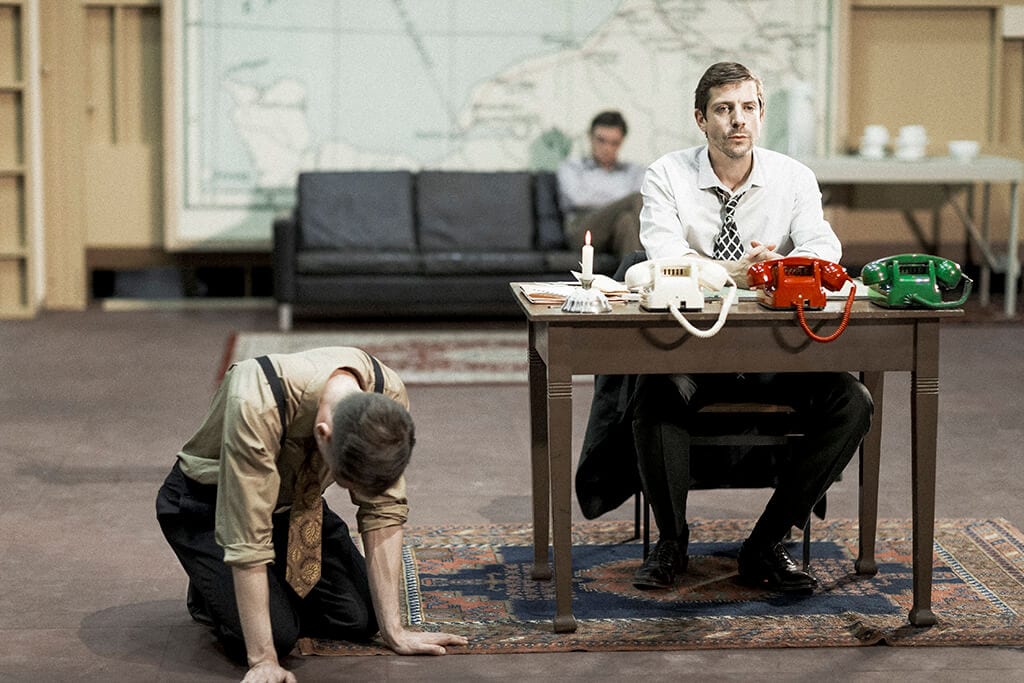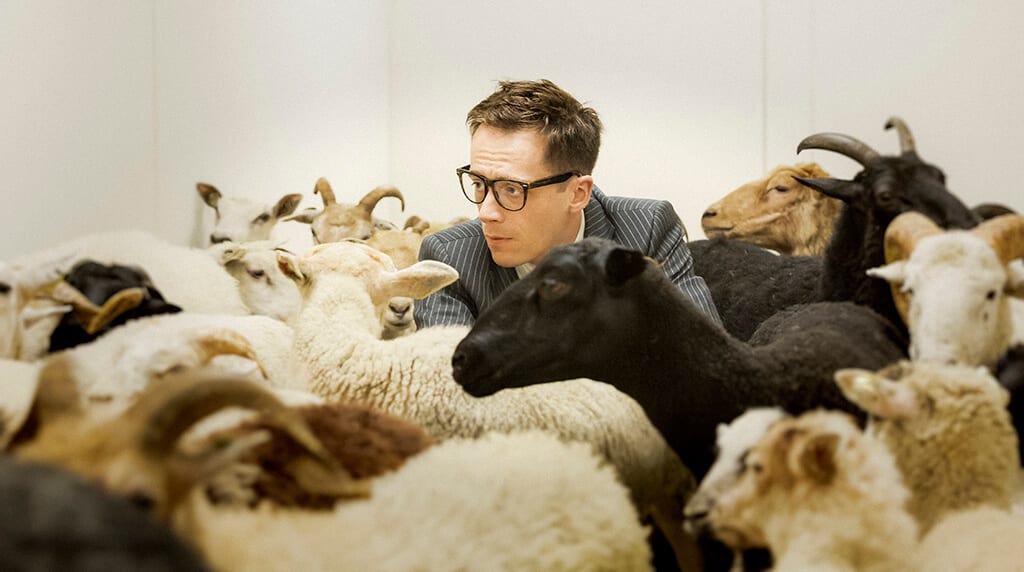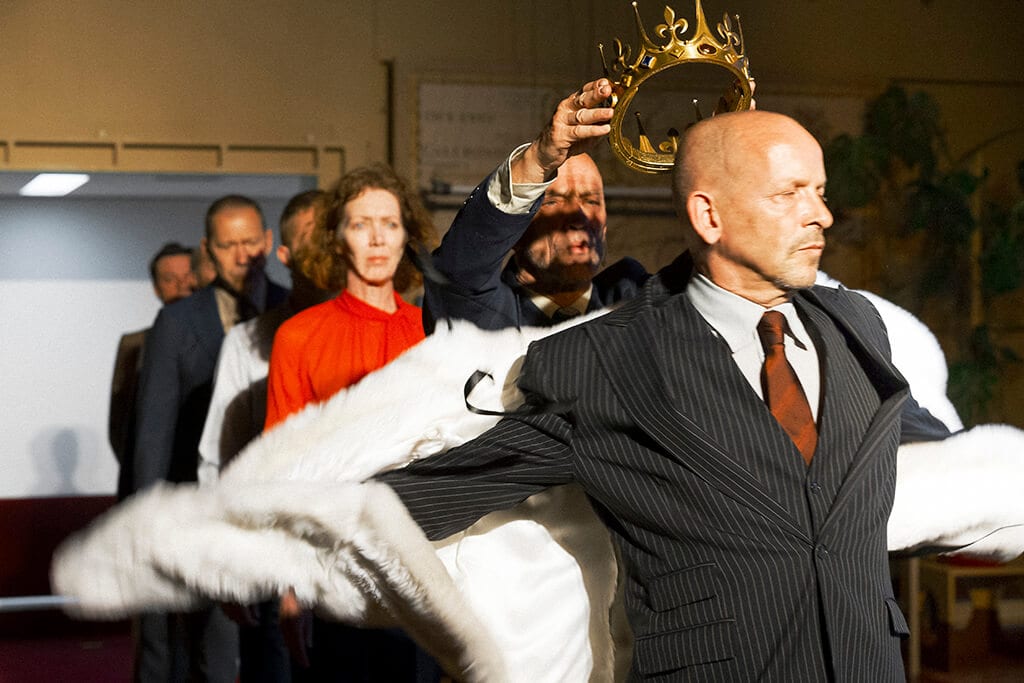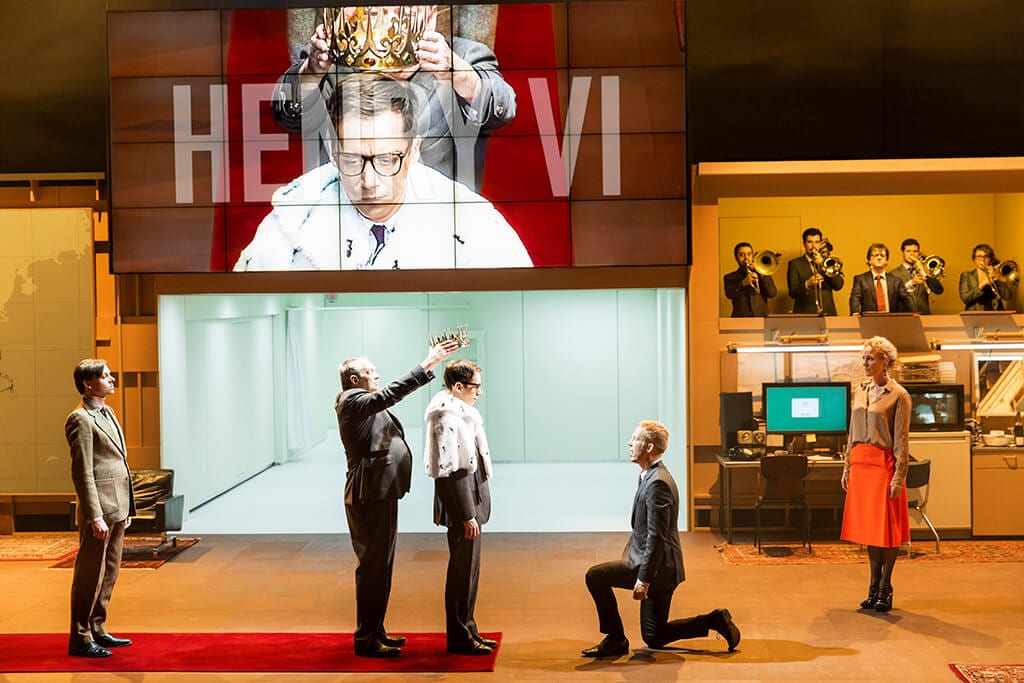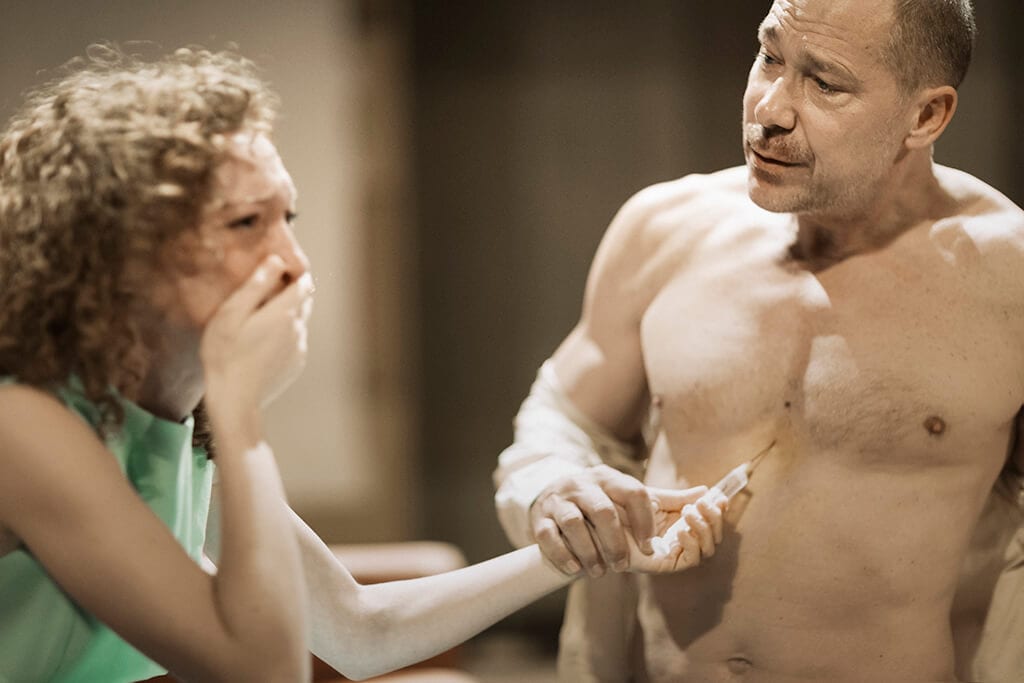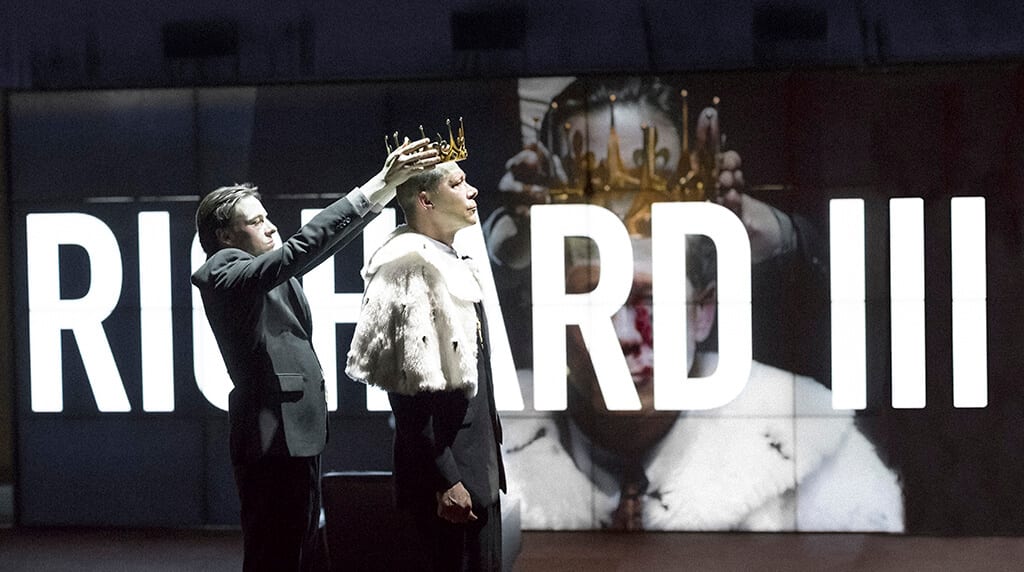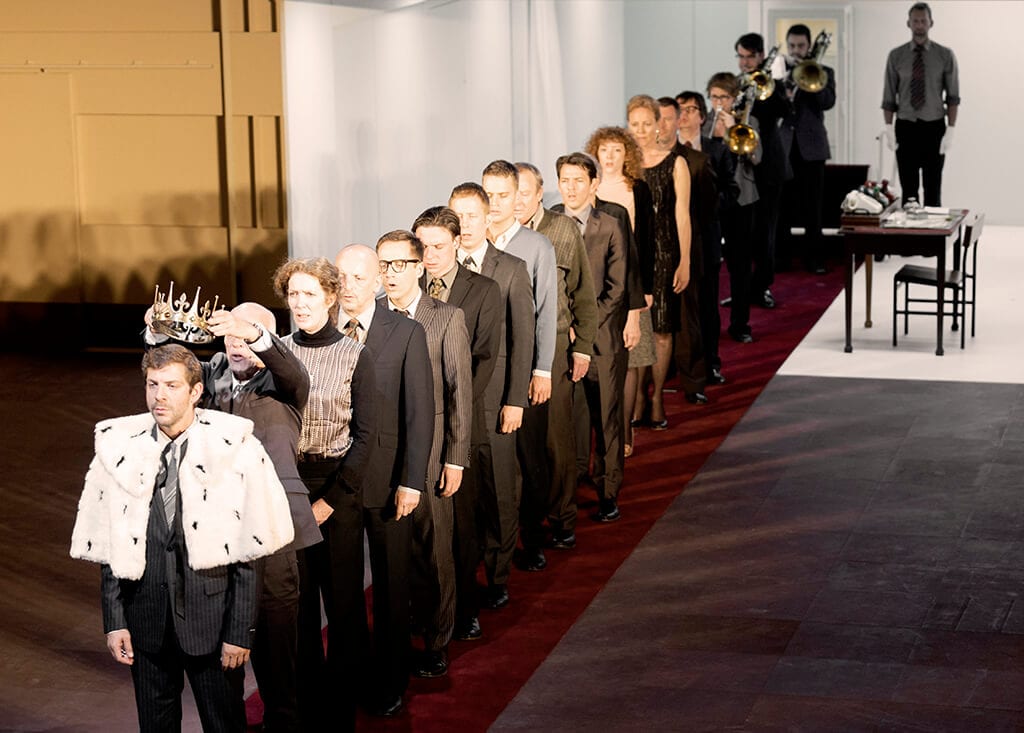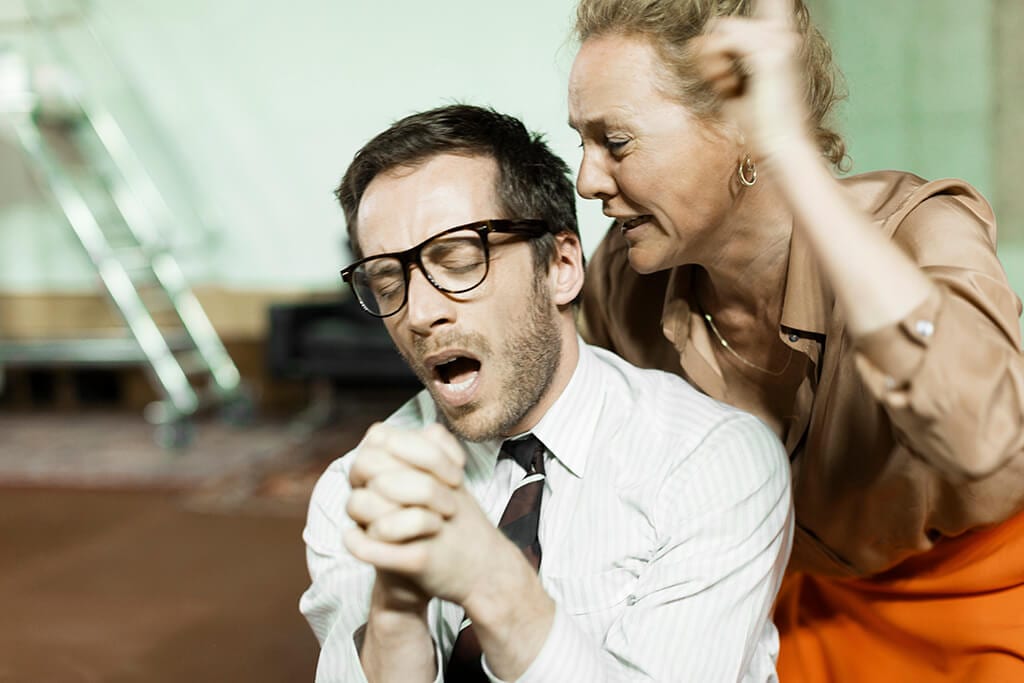Kings of War is an epic combination of Shakespeare’s Henry V, Henry VI and Richard III into one thrilling and deeply insightful piece. Performed in modern Dutch with English subtitles, we are guided through this restless period of international and national warfare. The English Crown is under threat from overseas in France as well as at home by the House of York.
The piece begins as the first king of war, Henry V (Ramsey Nasr), succeeds his father to the throne amidst rising tensions between the French and English. Despite a modest sized cast Toneelgroep Amsterdam are able to recreate the horrors of the army camps and battlegrounds through effective staging, live video footage and a good old smoke machine. Their focus on the importance of the ambassadors in the dispute between countries, whilst often playful and humorous, pins the sequence firmly in the 21st century and reaffirms its importance for a modern audience.
The untimely death of his father thrusts Henry VI (Eelco Smits) into the role of King at only 9 months old. It soon becomes apparent that it is not only his young age, but also his entire character that renders him wholly unfit for the role of King. His decision to go against his Uncle Gloucester the Lord Protector of England (Aus Greidanus Jr) and marry Lady Margaret (Janni Goslinga) exposes him to betrayal, disloyalty and the threat of the Duke of York (Bart Slegers) for the crown.
As the House of York inherits the crown, we approach the reign of Richard III (Hans Kesting) who works his way into power through the calculated killings of all his family. This period of decline is mirrored in the loss of life, on-stage cast and set. Kesting is utterly engrossing as the cold and twisted ruler – his hypnotic descent into madness is in itself enough reason to see this play.
There are too many things to praise within this piece, from mesmerising live song and music to the artistic lighting choices – everything fuses together to create complete theatrical spectacle.
The creative staging of the hidden walkway around the back of the visible performance space allows the live video footage to come into its own. It facilitates the benefits of visibility that film allows while still maintaining the classic element of live theatre. Not only does this technique convey the actors’ skill for both stage and screen, it adds to the concept of the shielded horrors happening within the close proximity of the monarch’s court.
It is hard to box this piece into a specific genre as it includes elements of many styles; thriller, drama, documentary, reality television and a news broadcast.
Through creative vision and skilled direction every element of theatre is nourished and used to full potential in this piece; it is a spectacle the Bard should be proud to have inspired. Schitterend!

